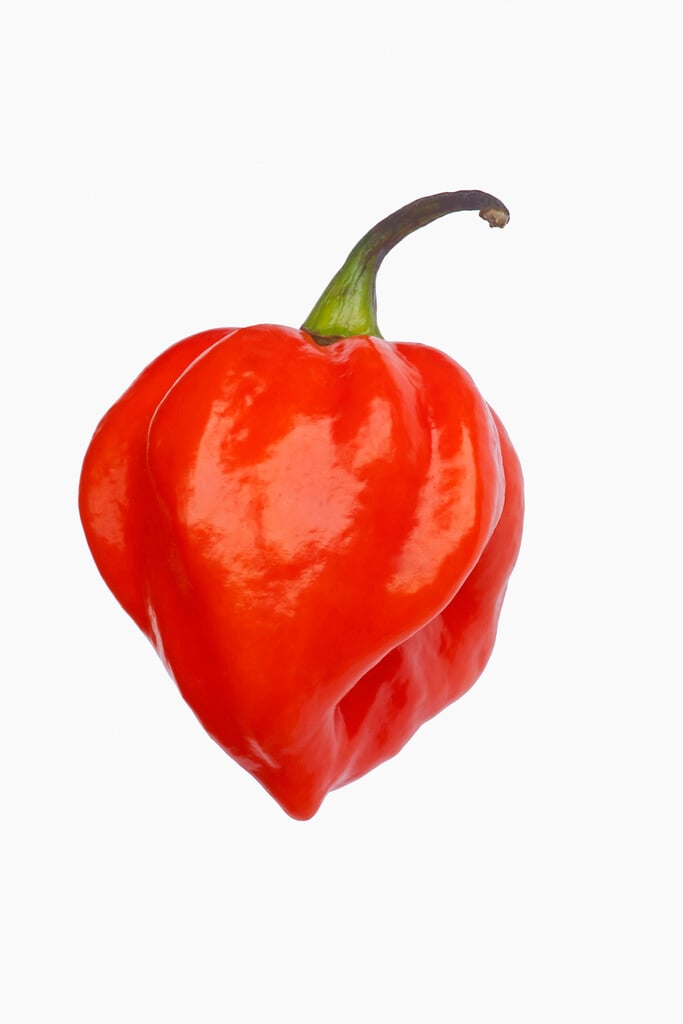Capsicum chinense Habanero Group
chilli pepper Habanero Group
A group of very hot chilli peppers originating from the Amazon region. The bushy plants typically produce fruit about 2-6cm long, ripening from green to a number of colours including orange, red as well as white, brown, yellow and purple
Size
Ultimate height
0.5–1 metresTime to ultimate height
1 yearUltimate spread
0.1–0.5 metresGrowing conditions
Moisture
Moist but well–drained, Well–drainedpH
Acid, Alkaline, NeutralColour & scent
| Stem | Flower | Foliage | Fruit | |
| Spring | Green | |||
|---|---|---|---|---|
| Summer | White | Green | Green Orange Purple Red | |
| Autumn | Green | |||
| Winter |
Position
- Full sun
Aspect
South–facing or West–facing
Exposure
Sheltered Hardiness
H1CBotanical details
- Family
- Solanaceae
- Native to GB / Ireland
- No
- Foliage
- Deciduous
- Habit
- Bushy
- Potentially harmful
- Humans/Pets: Irritant if eaten, skin/eye irritant. Wear gloves and other protective equipment when handling For further information and contact numbers regarding pets, see the HTA guide to potentially harmful plants
- Genus
Capsicum are annual or perennial plants, with simple, alternate leaves, and tubular or bell-shaped flowers. They are grown for their glossy, many-seeded edible fruits, including chilli and bell peppers, and as indoor ornamental plants
- Name status
Accepted
How to grow
Cultivation
Best grown inside on a sunny windowsill or in a greenhouse, but can be grown outside once all danger of frost has passed; select a sunny, sheltered position and grow in containers, peat-free growing bags or in open ground. Water regularly and feed with a high-potassium, liquid fertiliser once the first fruit has set. See how to grow: chilli peppers for further advice.
Propagation
Propagate by seed in late winter to early spring
Suggested planting locations and garden types
- Patio and container plants
- Conservatory and greenhouse
- Edible fruit
Pruning
No pruning required; pinch out growing tips of plants when they are about 20cm tall to encourage bushiness
Pests
May be susceptible to glasshouse red spider mite, whitefly, aphids, slugs and snails
Diseases
May be susceptible to grey moulds
Love gardening
Sign up to receive regular gardening tips, inspiration, offers and more
View our Privacy Policy
Get involved
The Royal Horticultural Society is the UK’s leading gardening charity. We aim to enrich everyone’s life through plants, and make the UK a greener and more beautiful place.

